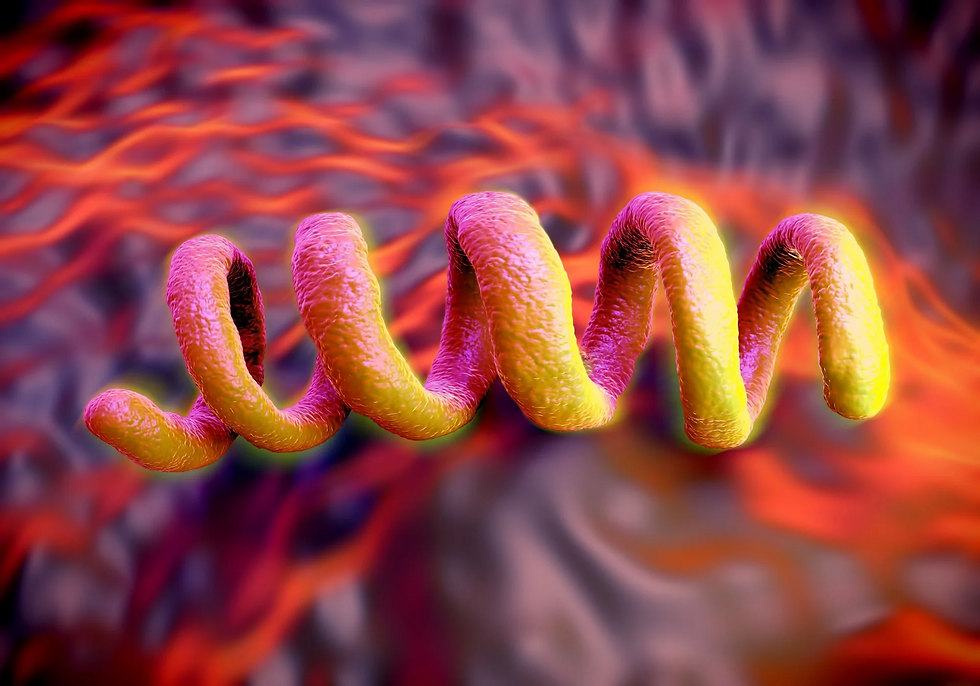- Jul 24, 2024
- 4 min read

HPV is the most common STI. There are more than 150 different types of HPV. Many forms of HPV do not show any symptoms. Some cause genital warts. The HPV vaccine protects against certain types that are associated with genital warts and cervical cancer.
How do you get HPV?
What is the HPV vaccine?
What are the symptoms of HPV?
What's involved in HPV testing?
How do you treat HPV?
How do you get HPV?
About 40 types of HPV infect the genital area – the vulva, vagina, cervix, rectum, anus, penis, and scrotum – as well as the mouth and throat.
These kinds of HPV are transmitted from sexual skin-to-skin contact when the vulva, vagina, cervix, penis, or anus touches someone with HPV’s genitals or mouth and throat.
If you do not have HPV, the vaccine can help protect you from certain types, including those associated with cervical cancer. When used consistently and correctly, condoms help protect against HPV and many other STIs.
What is the HPV vaccine?
The HPV vaccine protects against certain types of HPV that can lead to cancer or genital warts. The HPV vaccine works extremely well. Clinical trials showed the HPV vaccine provides close to 100% protection against cervical precancers and genital warts.
The HPV vaccine is most effective during adolescence, when the body produces more antibodies against the virus. It is given in a series of shots.
What are the symptoms of HPV?
HPV, like most STDs, often does not show any symptoms.
Two types of HPV (6 and 11) can cause genital warts, which are harmless growths on the skin of the vulva, vagina, cervix, penis, scrotum, or anus. Genital warts look like fleshy, soft bumps that sometimes resemble miniature cauliflower. Usually painless, these can be treated and removed just like the warts you might get on your hands or feet.
What's involved in HPV testing?
Pap smears do not directly test for HPV, but can detect abnormal cell changes in the cervix of women that are likely caused by HPV and can lead to cancer. If abnormal cells are detected, a healthcare provider will advise on monitoring and treatment.
There is an HPV test that can find some high-risk types of the virus directly, but it may not be widely available. It may be provided as a follow-up to a Pap test that finds abnormal cells or when Pap test results are not clear.
For men, there is currently no test approved to detect high-risk HPV. By getting vaccinated against HPV, men can help to prevent transmission.
How do you treat HPV?
There is no cure for HPV. If you don't have HPV, the vaccine is the best defense against cancer caused by HPV, as well as genital warts. Regular pap smears for women are also critical to finding abnormal cell changes in the cervix early. Genital warts may be removed by a healthcare provider to prevent the spread of that type of HPV.
The information on this page is adapted from the CDC and Planned Parenthood.
VPH (virus del papiloma humano)
El VPH es la ETS más común en los EE.UU. cada año. Hay más de 150 tipos diferentes de VPH. Muchas formas de VPH no presentan ningún síntoma. Algunos causan verrugas genitales. La vacuna contra el VPH protege contra ciertos tipos del virus que están asociados con verrugas genitales y cáncer cervical.
¿Cómo se contrae el VPH?
¿Qué es la vacuna contra el VPH?
¿Cuáles son los síntomas del VPH?
¿Cómo es la prueba de VPH?
¿Cómo se trata el VPH?
¿Cómo se contrae el VPH?
Alrededor de 40 tipos de VPH infectan el área genital (vulva, vagina, cuello uterino, recto, ano, pene y escroto), así como la boca y la garganta.
Estos tipos de VPH se transmiten por contacto sexual de piel a piel cuando la vulva, la vagina, el cuello uterino, el pene o el ano entran en contacto con los genitales, o la boca y la garganta, de una persona que tiene VPH.
Si no tienes VPH, la vacuna puede ayudar a protegerte de ciertos tipos, incluidos los relacionados con el cáncer cervical. Cuando se usan de manera consistente y correcta, los condones ayudan a proteger contra el VPH y muchas otras ETS.
¿Qué es la vacuna contra el VPH?
La vacuna contra el VPH protege contra ciertos tipos de VPH que pueden provocar cáncer o verrugas genitales. Esta vacuna funciona extremadamente bien. Los ensayos clínicos mostraron que la vacuna contra el VPH proporciona una protección cercana al 100% contra las verrugas genitales y las cervicales pre cancerígenas.
La vacuna contra el VPH es más efectiva durante la adolescencia, cuando el cuerpo produce más anticuerpos contra el virus. Se administra en una serie de dosis.
¿Cuáles son los síntomas del VPH?
El VPH, como la mayoría de las ETS, a menudo no presenta ningún síntoma.
Dos tipos de VPH (6 y 11) pueden causar verrugas genitales, que son crecimientos inofensivos en la piel de la vulva, la vagina, el cuello uterino, el pene, el escroto o el ano. Las verrugas genitales se parecen a bultos carnosos y suaves que a veces se asemejan a una coliflor en miniatura. Por lo general no causan dolor, y pueden tratarse y eliminarse como las verrugas que podrías tener en tus manos o pies.
¿Cómo es la prueba de VPH?
Para los hombres, actualmente no hay pruebas aprobadas para detectar el VPH de alto riesgo. Al vacunarse contra el VPH, los hombres pueden ayudar a prevenir la transmisión.
¿Cómo se trata el VPH?
No hay cura para el VPH. La vacuna es la mejor defensa contra el cáncer causado por el VPH, así como las verrugas genitales. Un proveedor de salud puede eliminar las verrugas genitales para prevenir la propagación de ese tipo de VPH.
La información en esta página está adaptada de los Centros de Control y Prevención de Enfermedades y Planned Parenthood.
%20(400%20%C3%97%20100%20px)%20(200%20%C3%97%20100%20px)%20(200%20%C3%97%2075%20px)%20(200%20%C3%97%2050%20px)%20(150%20%C3%97%205.png)



